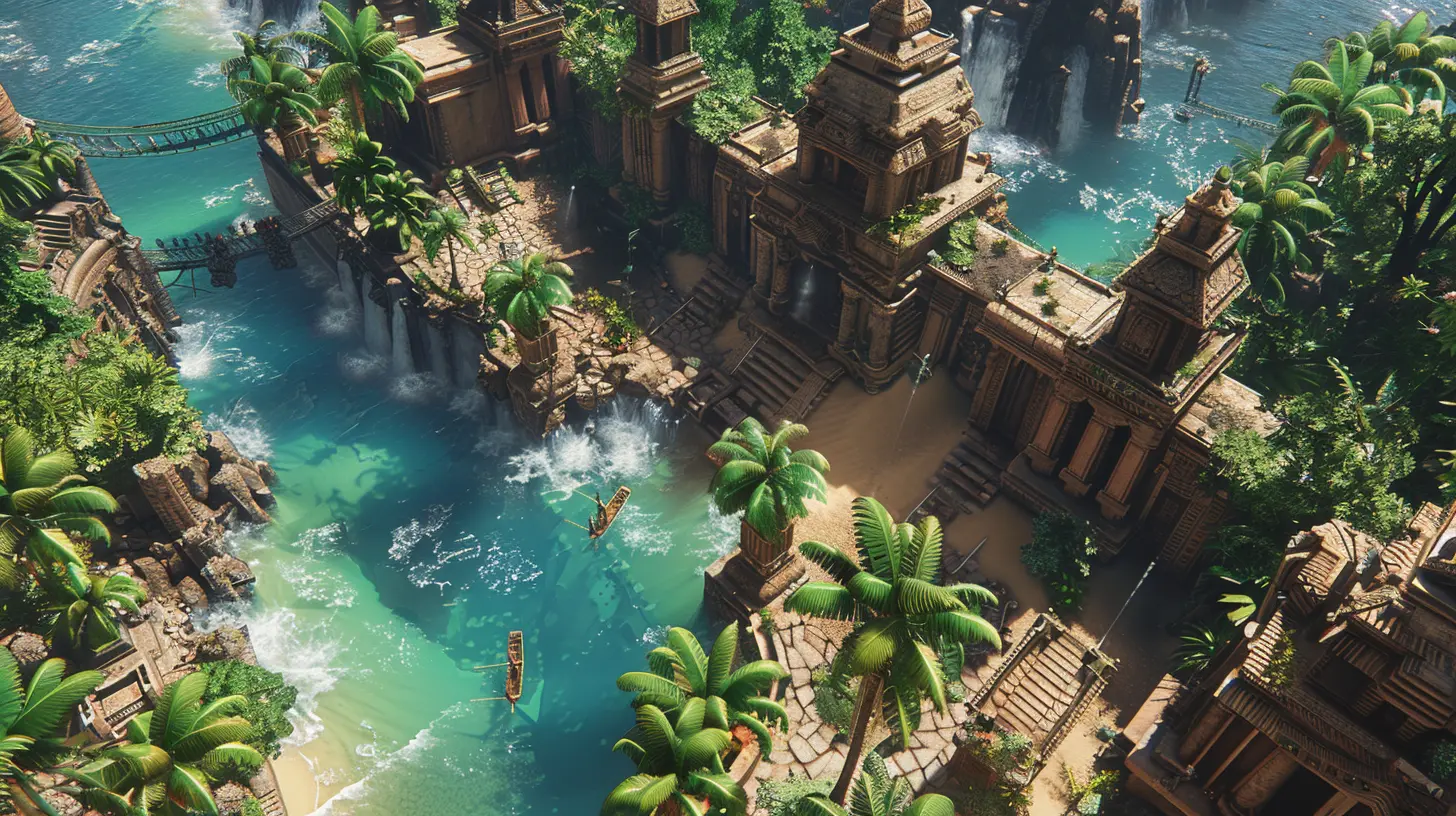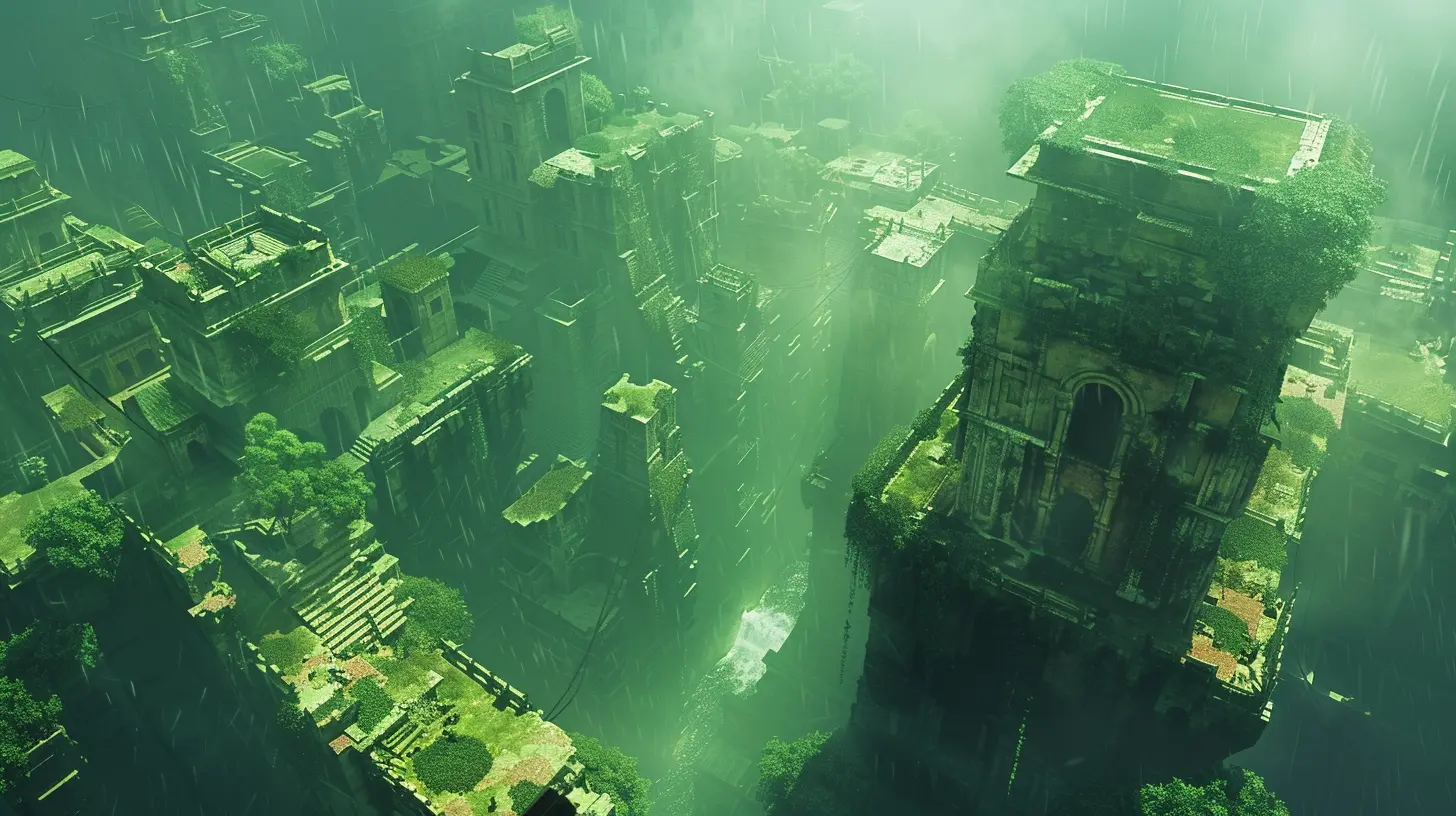How Level Design Can Elevate Your Action Gameplay Experience
19 November 2025
When we talk about what makes an action game unforgettable, what’s the first thing that pops into your head? Explosions? Boss battles? That rush of adrenaline when you just barely dodge a killing blow? Sure, all those things play a role. But there’s one unsung hero behind the scenes that truly shapes every thrilling moment: level design.
Yep, you heard that right. Level design. It's that hidden genius that elevates a fun action game into a heart-pounding, edge-of-your-seat masterpiece. Great level design doesn't just set the stage—it sets the tone, pace, challenge, and story without saying a single word.
Let’s dive deep into how level design can totally transform your action gameplay experience. Ready? Let’s go!
What Exactly Is Level Design?
Before we get into the meat of it, let’s clear the air. Level design isn't just about creating maps. It’s about crafting interactive experiences. Think of it like building the ultimate rollercoaster—you’re not just laying tracks, you’re designing every twist, drop, and loop to hit the player right in the feels.In video games, level designers are like architects with a wild imagination. They decide where enemies spawn, where cover is placed, how verticality works, what paths players can take, and how every element connects to guide the player through the story and action.
Why It's So Important in Action Games
In action games, the gameplay is fast, explosive, and intense. Players are constantly moving, fighting, and reacting. So, the level has to keep up. An action game with flat, predictable, and static levels? That’s like watching an action movie where every scene takes place in the same room. Yawn.Effective level design keeps the player engaged. It adds rhythm to the chaos, creates tension and release moments, and pushes you to experiment with combat and movement. It becomes part of the gameplay—not just the background.
Flow: The Heartbeat of Action Gameplay
Ever heard of “game flow”? It’s that perfect balance between challenge and skill where players are totally immersed. Great level design helps you reach that flow state. It doesn’t throw you into an impossible battle from the start or bore you with too-easy runs. Instead, it gradually builds intensity, giving you just enough room to breathe before the next epic encounter.Think of the game DOOM (2016 & Eternal). You’re always moving, always fighting, but the levels are so thoughtfully designed—with elevation, cover, ammo placement, and wide-open arenas—that battles feel like a brutal ballet. You’re dancing through gunfire, not just blindly shooting.
Guiding Without Handholding
One of the sneakiest ways level design works its magic is by guiding you without you even noticing. Clever placement of lights, enemy sounds, environmental storytelling, and pathways help you instinctively know where to go next. No neon arrow needed.Let’s take Uncharted as an example. You’re scaling cliffs, ducking for cover, and platforming through ancient ruins—all without a big glowing marker saying “this way.” That’s a masterclass in using level design to guide players seamlessly.
Encouraging Exploration and Rewarding Curiosity
A well-designed level doesn’t just funnel you from one enemy encounter to the next. It begs you to poke around, to explore hidden corners, to take risks. And when players are rewarded for that curiosity—with a rare weapon, a secret boss, or just a cool detail—it deepens their connection with the game.Games like Tomb Raider or Control are built around exploration. Every area feels alive, like a living puzzle that’s waiting to be unraveled. You might be in the middle of a firefight, but part of you still wonders, “What’s behind that door?”
Verticality: Taking Action to New Heights
Flat levels are so last-gen. Modern action games are playing with height—like, a lot. Adding verticality to level design opens up new strategies and dynamics. Climbing, dropping down, sniping from a high point, jumping across ledges—it all adds that extra layer of intensity.Titanfall 2 nailed this concept. With parkour mechanics, wall-running, and multi-level arenas, you're not just fighting horizontally—you’re fighting in three dimensions. It’s mind-blowingly good, and the level design is the reason why.
Pacing the Action
You can’t go full-throttle all the time. Even the most explosive action game needs peaks and valleys. Great level design knows when to crank the heat and when to let the player breathe.Maybe there's a puzzle after a big fight or a quiet moment where you explore a ruined city before the next ambush. These moments give the action more meaning. They're like the quiet moments in a song before the beat drops—it builds anticipation and makes the payoff that much sweeter.
Telling a Story Without Words
Storytelling isn’t just dialogue and cutscenes. Sometimes, the environment itself tells a richer tale. The way a level is built, destroyed, or transformed can say so much about the world, the enemies, and the events.The Last of Us Part II is phenomenal at this. You might walk through a once-beautiful museum now covered in weeds and bloodstains. That’s storytelling. It pulls you into the world and adds emotional weight to the action.
Teaching Through Design
Action games don’t always have time for long tutorials. The best ones teach you through playing. Smart level design introduces new mechanics in safe spaces, lets you try them out, and then challenges you to master them.Ever notice how the first time you get a new power, the level gives you a gentle scenario to use it in? Then, five minutes later, throws you into a high-stakes fight where that new power saves your life? That’s no accident. That’s brilliant design.
Creating Replay Value
When levels are beautifully crafted, players want to come back again and again. Maybe to try a different path, find secrets, or master the challenges. That replayability is gold.Look at games like Hitman or Dishonored. Their levels are playgrounds of chaos and creativity. You can approach a mission 10 different ways—and each one feels rewarding and intentional. That kind of design extends a game’s lifespan like crazy.
Emotionally Engaging Spaces
Let’s get a bit deeper here. Levels can make you feel. A tight corridor can make you feel anxious. A wide desert with no cover can leave you feeling exposed. Level design isn’t just about physical space—it’s emotional space too.Ever walked into a boss arena and felt your stomach drop? That’s because the level is telling your brain, “Something big is about to go down.” That pre-fight tension? That’s powerful design at work.
Co-Op and Multiplayer: Designed for Chaos
In multiplayer or co-op action games, level design needs to do double duty. It has to cater to multiple playstyles, support balanced combat, and prevent frustration when multiple players are running around like headless chickens.Games like Apex Legends or Call of Duty Warzone have massive maps, but they’re designed so thoughtfully—with choke points, vertical spots, loot zones, and escape routes—that every match feels unique.
Accessibility and Player Comfort
One thing that modern level design is (thankfully) focusing more on is accessibility. Making sure every player—regardless of skill level, ability, or experience—can enjoy the action. That includes clear visual cues, safe areas for breaks, and alternative paths or difficulty scaling.This isn’t just good ethics—it’s good design. More players having more fun? That’s a win-win.
Final Thoughts: It’s More Than Just Layouts
So, yeah—level design is a big deal. It's the invisible hand that guides your experience, shapes your emotions, teaches without words, and turns ordinary gameplay into something truly extraordinary. When it’s done right, you don’t even notice it—but you definitely feel it.Action games may have flashy weapons and epic fights, but the real magic? It’s in how those moments are staged. That’s what makes you lean forward, heart pounding, totally zoned in. That’s what makes you say, "Just one more level."
So the next time you boot up your favorite action title and find yourself completely immersed, take a moment to appreciate the level designers. They’re the unsung heroes crafting the thrill rides we love.
all images in this post were generated using AI tools
Category:
Action GamesAuthor:

Tina Fisher
Discussion
rate this article
1 comments
Emily McVicar
Great insights! Effective level design truly makes or breaks action gameplay experiences.
November 19, 2025 at 3:44 AM


